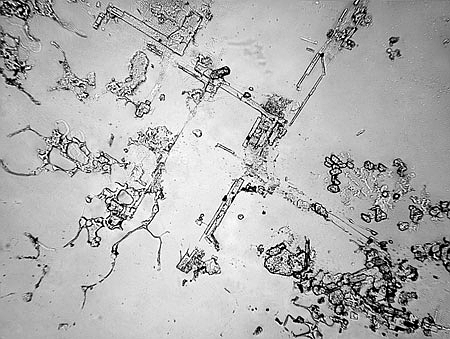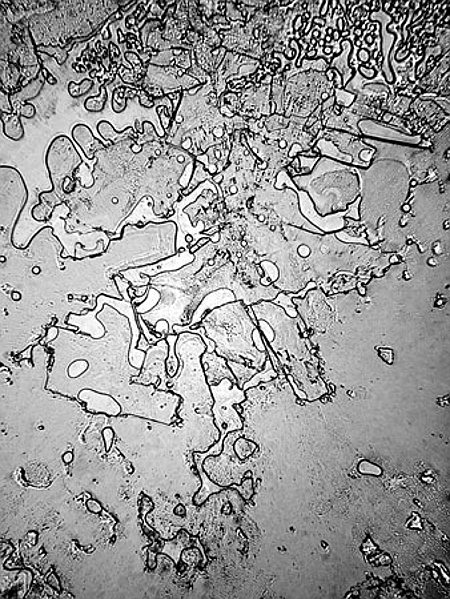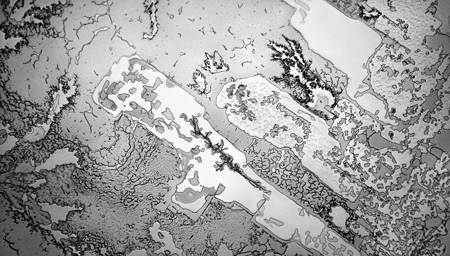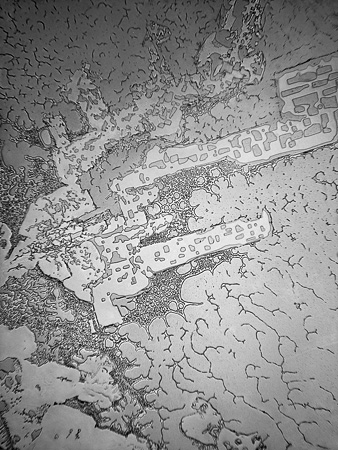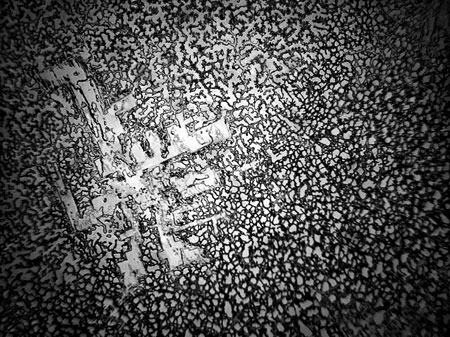It looks like you're using an Ad Blocker.
Please white-list or disable AboveTopSecret.com in your ad-blocking tool.
Thank you.
Some features of ATS will be disabled while you continue to use an ad-blocker.
share:

“Wordless and spontaneous, they release us to the possibility of realignment, reunion, catharsis: shedding tears, shedding old skin.”
-Rose-Lynn Fisher
The organs involved in crying and tear production were once thought to be vestigial. Yet, it is an interesting fact that if the 5th cranial nerve were cut, a person's ability to produce reflex tears would be disabled, but they would still be able to cry emotional tears.
Tears are full of potent hormonal alchemy. Although we produce tears for eye-lubrication and as a reflex action, as with chopping onions, emotional tears have a powerful social influence. The emotional tears of women, for instance, have a direct effect on male aggression via sex hormones.
Each of these different types of tears, the basal tears that lubricate our eyes, the reflex tears and the emotional tears all have been found to have different chemical compositions. They are all based on water and oils, but the emotional tears are full of protein-based hormones and even natural pain-killers.
More than a decade ago artist Rose-Lynn Fisher, an expert in photomicrography, began collecting her own tears and the tears of others for a photomicrographic study that she hoped would answer her own questions about the nature of tears and their differences. I hope that you all enjoy the following links, quotes and images that will direct you to her work.
Rose-Lynn Fisher: The Topography of Tears
“The Topography of Tears is a study of 100 tears photographed through a standard light microscope. The project began in a period of personal change, loss, and copious tears. One day I wondered if my tears of grief would look any different from my tears of happiness - and I set out to explore them up close.”
Onion Tears
“Years later, this series comprises a wide range of my own and others’ tears, from elation to onions, as well as sorrow, frustration, rejection, resolution, laughing, yawning, birth and rebirth, and many more, each a tiny history.”
-Rose-Lynn Fisher
“The random compositions I find in magnified tears often evoke a sense of place, like aerial views of emotional terrain.”
Tears of grief
“Tears are the medium of our most primal language in moments as unrelenting as death, as basic as hunger, and as complex as a rite of passage. They are the evidence of our inner life overflowing its boundaries, spilling over into consciousness.”
Rose-Lynn Fisher
Using a Zeiss microscope with an attached digital camera, she captures the composition of tears enclosed in glass slides, magnified between 10x and 40x.
“There are many factors that determine the look of each tear image, including the viscosity of the tear, the chemistry of the weeper, the settings of the microscope, and the way I process the images afterwards,” she says.
Tears of laughing till I'm crying
When she caught one of her own tears on a slide, dried it, and then peered at it through a standard light microscope,
“It was really interesting. It looked like an aerial view, almost as if I was looking down at a landscape from a plane,” she says. “Eventually, I started wondering—would a tear of grief look any different than a tear of joy? And how would they compare to, say, an onion tear?”
Tears of remembrance
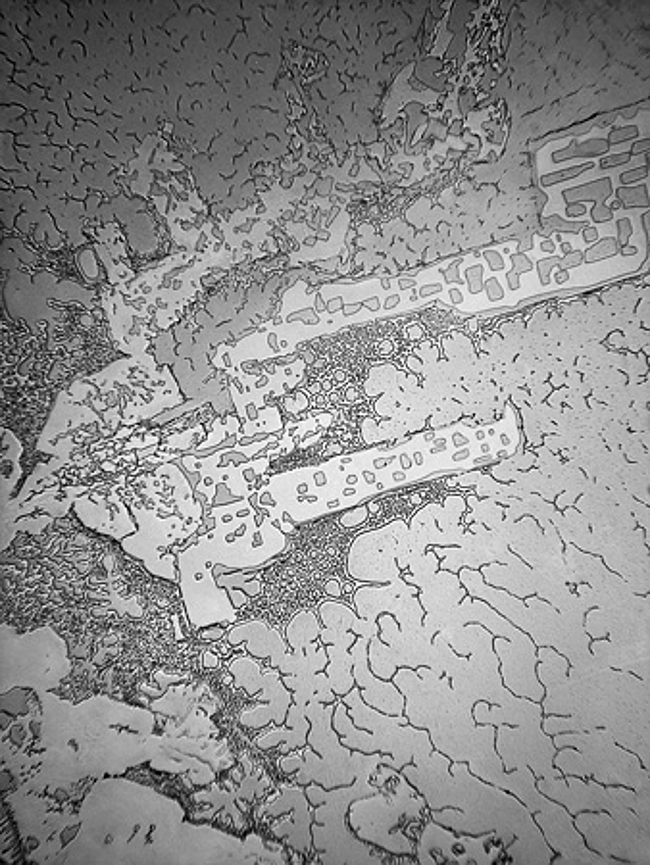
“It’s as though each one of our tears carries a microcosm of the collective human experience, like one drop of an ocean.”
-R-L Fisher
Crying is something that I became familiar with in middle age. I wasn't given the time nor license to grow familiar with crying as a child. The experience sped past me, and I learned to substitute for crying the things that boys learn to substitute for crying; usually some variation on rage.
As with the work of Masaru Emoto, we seem to have in the photomicrographic art of Rose-Lynn Fisher some indication of how our emotional states reverberate from our centers and influence the world.
I think that it is interesting that what we have here in Fisher's examples are not water crystals that were “influenced” from without in some way, like Emoto's specimens. These are from within us, made by us, and despite the warning label that must be placed on Emoto's work, I think that we are seeing in these sorts of images some indication of the means by which we will better understand ourselves in the future; as emotional beings.
It seems to me that as our understanding of the medicine of the heart develops, images like these will become more meaningful to us as recurring motifs in everything that we influence, not just water.
Thanks, ATS.
edit on 10-5-2014 by Bybyots because: . : .
It was my understanding that crying emotional tears of sorrow is a way for the body to detoxify neurotoxins from the stress and anxiety caused. This
is why one usually feels better after a good cry. Tears of joy reportedly contained serotonin and dopemine. Definitely not a sign of weakness to cry.
Good thread.
a reply to: sparrowstail
Could the notion that it is a sign of weakness to cry have been spread to suppress the knowledge of how helpful this activity can be?
Hahah, I couldn't help it. :-)
Nice topic though. Thanks for all this info I would have never known.
Could the notion that it is a sign of weakness to cry have been spread to suppress the knowledge of how helpful this activity can be?
Hahah, I couldn't help it. :-)
Nice topic though. Thanks for all this info I would have never known.
Fascinating pictures.
I never would have dreamed they could be so significantly different from each other.
I never would have dreamed they could be so significantly different from each other.
a reply to: andr3w68
The same thing crossed my mind, too. The title of the thread was very nearly, "The Conspiracy Against Crying".
Could the notion that it is a sign of weakness to cry have been spread to suppress the knowledge of how helpful this activity can be?
The same thing crossed my mind, too. The title of the thread was very nearly, "The Conspiracy Against Crying".
a reply to: Asktheanimals
Hi ATA,
I know, they really are neat, aren't they? It never would have dawned on me either. It seems pretty clear from the images that the hormones in the emotional tears cause the crystals that form to take on shapes and patterns other than that of dried mineral salts, like the "onion tears"
I think that some of the similarities in the emotional tears are striking, too.
Those both have to do with things remembered and both have that columnar shape.
And these two...
The shape in the image called "Tears of change" seems to be the shape "released" in the bottom image.
They really are awesome. Thanks for stopping by, ATA.
Hi ATA,
I know, they really are neat, aren't they? It never would have dawned on me either. It seems pretty clear from the images that the hormones in the emotional tears cause the crystals that form to take on shapes and patterns other than that of dried mineral salts, like the "onion tears"
I think that some of the similarities in the emotional tears are striking, too.
Tears of timeless reunion.
Tears of remembrance.
www.rose-lynnfisher.com...
Those both have to do with things remembered and both have that columnar shape.
And these two...
Tears of change.
Tears of release.
The shape in the image called "Tears of change" seems to be the shape "released" in the bottom image.
They really are awesome. Thanks for stopping by, ATA.
originally posted by: andr3w68
a reply to: sparrowstail
Could the notion that it is a sign of weakness to cry have been spread to suppress the knowledge of how helpful this activity can be?
Hahah, I couldn't help it. :-)
Nice topic though. Thanks for all this info I would have never known.
Throughout history it seems that we were made to feel as if the body is malfunctioning when you cry. When actually it is working perfectly. As usual our egos get in the way.
a reply to: Bybyots
Very interesting read, Thanks !
This reminds me of cymatics. How thoughtful for them to do the photomicrographic study of tears.
It makes me think more about the vibrations/frequencies of tears as they are released and it is amazing that the shapes we see in the images posted were all different for the different types of emotions being felt during the release of the tears.
I don't know much about the physical aspects of how tears form but I'd be more interested to know what parts of the brain are activated during the crying process. The hormones released into the tears would be very interesting to study further.
leolady
Very interesting read, Thanks !
This reminds me of cymatics. How thoughtful for them to do the photomicrographic study of tears.
It makes me think more about the vibrations/frequencies of tears as they are released and it is amazing that the shapes we see in the images posted were all different for the different types of emotions being felt during the release of the tears.
They are all based on water and oils, but the emotional tears are full of protein-based hormones and even natural pain-killers.
I don't know much about the physical aspects of how tears form but I'd be more interested to know what parts of the brain are activated during the crying process. The hormones released into the tears would be very interesting to study further.
leolady
Some of them, like grief, look like a town. Laughing till I'm crying looks like a natural landscape. Rememberance looks like a military
installation. Onions... looks like... snowflakes or mountains or something...
cool stuff I never considered the difference between different tears.
cool stuff I never considered the difference between different tears.
a reply to: Bybyots
I think that this one is my favourite...'tears of elation at a liminal moment'
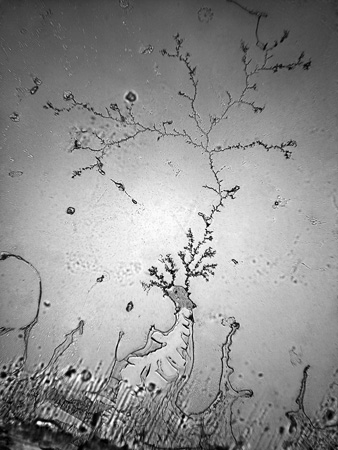
I am also fascinated by the secretion of hormones, particularly this...
en.wikipedia.org...
Perhaps explaining why the suppression of the emotional release, and therefore of the surplus hormone, tends to manifest as 'rage'.
ETA. In fact, just scanning through the role of ACTH and corticosteriods, it does make me wonder if this culture that we created whereby men were not permitted to cry could be largely responsible for men dying earlier than women.
I think that this one is my favourite...'tears of elation at a liminal moment'

I am also fascinated by the secretion of hormones, particularly this...
Adrenocorticotropic hormone (ACTH), also known as corticotropin, is a polypeptide tropic hormone produced and secreted by the anterior pituitary gland. It is an important component of the hypothalamic-pituitary-adrenal axis and is often produced in response to biological stress (along with its precursor corticotropin-releasing hormone from the hypothalamus). Its principal effects are increased production and release of corticosteroids.
en.wikipedia.org...
Perhaps explaining why the suppression of the emotional release, and therefore of the surplus hormone, tends to manifest as 'rage'.
ETA. In fact, just scanning through the role of ACTH and corticosteriods, it does make me wonder if this culture that we created whereby men were not permitted to cry could be largely responsible for men dying earlier than women.
edit on 11-5-2014 by KilgoreTrout because: (no reason given)
a reply to: KilgoreTrout
Hi KilgorTrout,
It seems likely. Tears are the most efficient means of ridding the body of cortisol, and cortisol is really toxic.
Perhaps explaining why the suppression of the emotional release, and therefore of the surplus hormone, tends to manifest as 'rage'.
Hi KilgorTrout,
It seems likely. Tears are the most efficient means of ridding the body of cortisol, and cortisol is really toxic.
a reply to: Bybyots
This is interesting too.
en.wikipedia.org...
Especially in relation to this.
www.health.harvard.edu...
And then back to this...
I'm not really sure what to make of it...do you know what though, I'd be really interested in seeing photos of baby tears, comparatively, as well as those of women pre- and post-partum. All those weepy moments before and after birth are perhaps little more than releasing a valve to let out an excess. Certainly sheds a different light on things, I mean, how many of us at that point in our lives have made the comment that we don't know why we are crying?
Absolutely fascinating! I can't say I understand the implications, but this kind of blows me away. Beyond that though, that something that is so very, very human, is apparently so very, very mechanical...#, no, can't get my head around it yet.
As always, you've made me think
Damn you!
This is interesting too.
During human pregnancy, increased fetal production of cortisol between weeks 30 and 32 initiates production of fetal lung surfactant to promote maturation of the lungs. ...
en.wikipedia.org...
Especially in relation to this.
More than 9,000 women recorded their moods during the fourth and eighth month of pregnancy and again two and eight months after giving birth. The questionnaire, which was specially designed for pregnant women and new mothers, concentrated on thoughts and feelings — emotional swings, crying spells, low self-esteem, hopelessness, irritability, and inability to enjoy normally pleasurable activities. The researchers paid less attention to physical symptoms, because they did not want to mistake physical effects of pregnancy (such as appetite loss, fatigue, and insomnia) for symptoms of depression. Depression ratings were highest at the eighth month of pregnancy and lowest eight months after childbirth. Fourteen percent of the women scored above the threshold for probable clinical depression just before the child’s birth, compared with 9% two months later.
www.health.harvard.edu...
And then back to this...
Changes in cortisol have also been linked to various types of separation. One widely studied form of separation is maternal separation. Following maternal separation, there is a significant increase in cortisol among both the mother and the infant. These changes are due to dysfunctions in the Hypothalamic-pituitary-adrenal (HPA) axis during a critical period in childhood. One study found that cortisol levels measured in the hair significantly decreased in peer-reared Rhesus monkeys in comparison to mother-reared monkeys at the age of two years. This difference was significant at the mark of two years, and remained significant when tested again at three and a half years.[53] This study marks the importance of maternal care, showing that despite being raised by a large peer support group, Rhesus monkeys experience long-lasting hypocortisolism when raised without their mother.
I'm not really sure what to make of it...do you know what though, I'd be really interested in seeing photos of baby tears, comparatively, as well as those of women pre- and post-partum. All those weepy moments before and after birth are perhaps little more than releasing a valve to let out an excess. Certainly sheds a different light on things, I mean, how many of us at that point in our lives have made the comment that we don't know why we are crying?
Absolutely fascinating! I can't say I understand the implications, but this kind of blows me away. Beyond that though, that something that is so very, very human, is apparently so very, very mechanical...#, no, can't get my head around it yet.
As always, you've made me think
Damn you!
edit on 11-5-2014 by KilgoreTrout because: (no reason given)
a reply to: Bybyots
I sometimes like to create water colour paintings by just dripping onto the sheet and then sprinkling salt onto the droplets which would create very fine patterns much as i see in those images, but on a more immediate scale not just microscopic , the salt forming the patterns as it dried and absorbed, though it never really did and the paintings always remain damp as they absorb moisture from the air, but it's a relaxing enough pastime.
I sometimes like to create water colour paintings by just dripping onto the sheet and then sprinkling salt onto the droplets which would create very fine patterns much as i see in those images, but on a more immediate scale not just microscopic , the salt forming the patterns as it dried and absorbed, though it never really did and the paintings always remain damp as they absorb moisture from the air, but it's a relaxing enough pastime.
a reply to: Kantzveldt
Hi Kantzveldt,
Thanks for stopping by. It was actually your "Beautiful Dead" thread that inspired me to do this one.
I wanted to try and send up a thread with a title more goth than "Beautiful Dead".
I honestly think that "The Topology of Tears" is way more goth than "The Beautiful Dead".
Hi Kantzveldt,
Thanks for stopping by. It was actually your "Beautiful Dead" thread that inspired me to do this one.
I wanted to try and send up a thread with a title more goth than "Beautiful Dead".
I honestly think that "The Topology of Tears" is way more goth than "The Beautiful Dead".
edit on 12-5-2014 by Bybyots because: . : .
originally posted by: Bybyots
a reply to: Kantzveldt
Hi Kantzveldt,
Thanks for stopping by. It was actually your "Beautiful Dead" thread that inspired me to do this one.
I wanted to try and send up a thread with a title more goth than "Beautiful Dead".
I honestly think that "The Topology of Tears" is way more goth than "The Beautiful Dead".
Does a dacrylagniac trump a necromaniac?
I'm not sure you've out Gothed Kantzveldt, but you've certainly out fetished her.
You sick, sick puppy
edit on 13-5-2014 by KilgoreTrout because: (no reason given)
a reply to: Bybyots
Yes my thread was more follies of the Counter Reformation rather than Gothic, but my main intrigue there was actually with the jewells after the fashion of Sainte Germaine, in that their association of the splendours of Heaven with jewells is time honoured, whether the Heavenly Temple of New Jerusalem that descends fashioned of such or the Heavenly trees of Gilgamesh that were covered in multi-coloured stones, the Heavenly powers were considered to be pure, shining and bright, thus my interest was in the light not darkness.
But in terms of this addendum lets consider that the oldest examples of skull decoration from the early Neolithic often had sea shells placed within the eye sockets, and that from these pearls, and we can make a poetic allusion to pearls and tears no?

Of course hereabouts pennies were more traditional.
a reply to: KilgoreTrout
Perhaps more likely misunderstood...
Yes my thread was more follies of the Counter Reformation rather than Gothic, but my main intrigue there was actually with the jewells after the fashion of Sainte Germaine, in that their association of the splendours of Heaven with jewells is time honoured, whether the Heavenly Temple of New Jerusalem that descends fashioned of such or the Heavenly trees of Gilgamesh that were covered in multi-coloured stones, the Heavenly powers were considered to be pure, shining and bright, thus my interest was in the light not darkness.
But in terms of this addendum lets consider that the oldest examples of skull decoration from the early Neolithic often had sea shells placed within the eye sockets, and that from these pearls, and we can make a poetic allusion to pearls and tears no?

Of course hereabouts pennies were more traditional.
a reply to: KilgoreTrout
Perhaps more likely misunderstood...
edit on Kam531132vAmerica/ChicagoTuesday1331 by Kantzveldt because: (no reason given)
originally posted by: Kantzveldt
Perhaps more likely misunderstood...
Absolutely, intentionally so. By's post had me in stitches and provoked my puella aeterna.
No reflection on you in the least and I apologise for any offence.
I have Sjogrens . It makes crying difficult, if not impossible. The body can't do it. There are times I have
really wanted to cry and I knew crying would make me feel better ... but I can't. So for those of you who can cry ... 'enjoy' it. That sounds
strange but trust me ... a good cry can do wonders for you.
Tears of release.

How ironic that it resembles a butterfly/moth and that usually represents metamorphose.
Love and harmony
Whateva

How ironic that it resembles a butterfly/moth and that usually represents metamorphose.
Love and harmony
Whateva
new topics
-
Supreme Court Oral Arguments 4.25.2024 - Are PRESIDENTS IMMUNE From Later Being Prosecuted.
Above Politics: 35 minutes ago -
Krystalnacht on today's most elite Universities?
Social Issues and Civil Unrest: 44 minutes ago -
Chris Christie Wishes Death Upon Trump and Ramaswamy
Politicians & People: 1 hours ago -
University of Texas Instantly Shuts Down Anti Israel Protests
Education and Media: 3 hours ago -
Any one suspicious of fever promotions events, major investor Goldman Sachs card only.
The Gray Area: 5 hours ago -
God's Righteousness is Greater than Our Wrath
Religion, Faith, And Theology: 9 hours ago
top topics
-
VP's Secret Service agent brawls with other agents at Andrews
Mainstream News: 14 hours ago, 11 flags -
Nearly 70% Of Americans Want Talks To End War In Ukraine
Political Issues: 15 hours ago, 5 flags -
Sunak spinning the sickness figures
Other Current Events: 15 hours ago, 5 flags -
Electrical tricks for saving money
Education and Media: 13 hours ago, 4 flags -
Late Night with the Devil - a really good unusual modern horror film.
Movies: 17 hours ago, 3 flags -
Krystalnacht on today's most elite Universities?
Social Issues and Civil Unrest: 44 minutes ago, 3 flags -
University of Texas Instantly Shuts Down Anti Israel Protests
Education and Media: 3 hours ago, 2 flags -
Any one suspicious of fever promotions events, major investor Goldman Sachs card only.
The Gray Area: 5 hours ago, 2 flags -
Supreme Court Oral Arguments 4.25.2024 - Are PRESIDENTS IMMUNE From Later Being Prosecuted.
Above Politics: 35 minutes ago, 2 flags -
Chris Christie Wishes Death Upon Trump and Ramaswamy
Politicians & People: 1 hours ago, 0 flags
active topics
-
University of Texas Instantly Shuts Down Anti Israel Protests
Education and Media • 57 • : Threadbarer -
The Reality of the Laser
Military Projects • 48 • : 5thHead -
Nearly 70% Of Americans Want Talks To End War In Ukraine
Political Issues • 69 • : SchrodingersRat -
Supreme Court Oral Arguments 4.25.2024 - Are PRESIDENTS IMMUNE From Later Being Prosecuted.
Above Politics • 1 • : network dude -
Candidate TRUMP Now Has Crazy Judge JUAN MERCHAN After Him - The Stormy Daniels Hush-Money Case.
Political Conspiracies • 744 • : Threadbarer -
Truth Social goes public, be careful not to lose your money
Mainstream News • 129 • : matafuchs -
Krystalnacht on today's most elite Universities?
Social Issues and Civil Unrest • 2 • : marg6043 -
Remember These Attacks When President Trump 2.0 Retribution-Justice Commences.
2024 Elections • 56 • : WeMustCare -
British TV Presenter Refuses To Use Guest's Preferred Pronouns
Education and Media • 148 • : Consvoli -
VP's Secret Service agent brawls with other agents at Andrews
Mainstream News • 44 • : ByeByeAmericanPie


